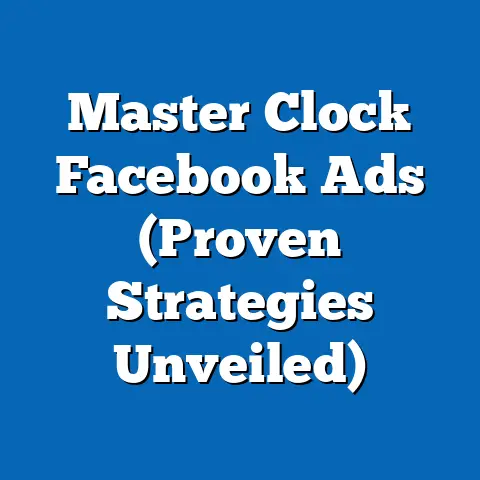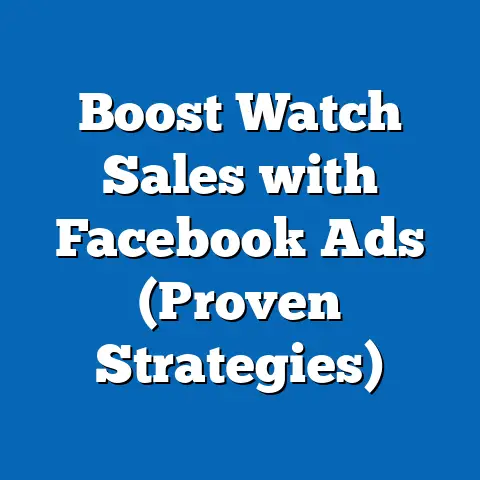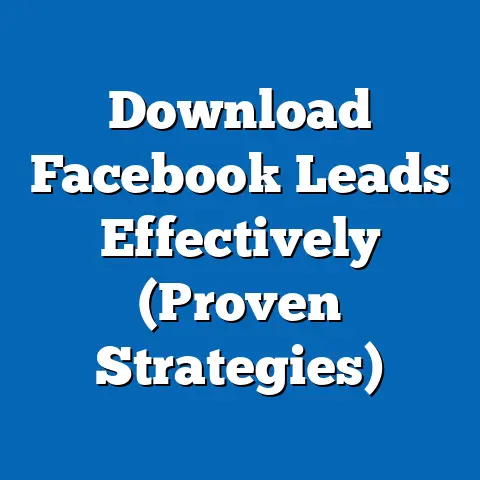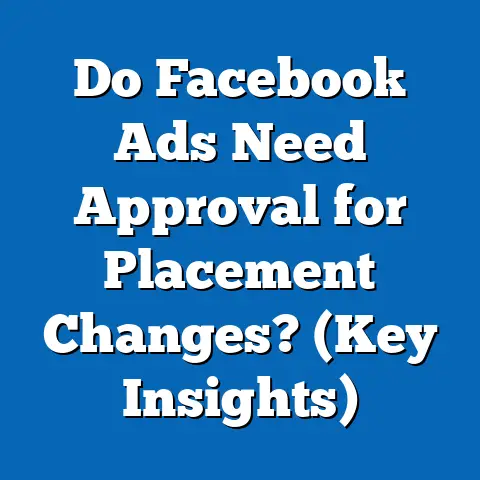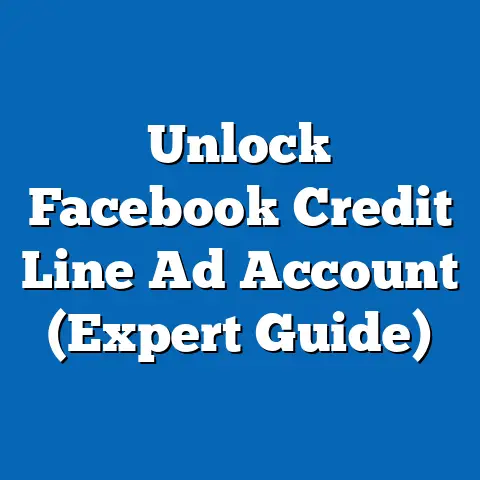Can I Share My Facebook Ad? (Crucial Insights Revealed)
Facebook advertising has become a cornerstone of modern marketing strategies. It’s the digital equivalent of setting up shop in the busiest marketplace in town, offering businesses unparalleled access to a vast and diverse audience. In fact, according to Statista, Facebook’s advertising revenue reached nearly $115 billion in 2022 alone, a testament to its power and reach. But what happens after you’ve crafted that perfect ad? Can you share it? Should you share it? These are questions that many marketers grapple with, and the answers aren’t always straightforward.
Expert Picks: Insights From the Pros
To truly understand the nuances of sharing Facebook ads, I’ve gathered insights from some of the most influential voices in the digital marketing space. These experts bring a wealth of knowledge and experience, offering different perspectives on how to maximize the impact of your Facebook advertising efforts.
Mari Smith: The Queen of Facebook Marketing
Mari Smith is a renowned social media strategist and author, often hailed as the “Queen of Facebook.” Her expertise lies in helping businesses leverage Facebook to build relationships and drive revenue.
Key Insight: Mari emphasizes the importance of sharing ads to amplify brand visibility and foster genuine audience engagement. She believes that when done strategically, sharing ads can transform a one-way broadcast into a dynamic conversation.
“Think of your Facebook ads as conversation starters,” Mari advises. “Sharing them allows your audience to become active participants, spreading your message organically and building a stronger connection with your brand.”
“Think of your Facebook ads as conversation starters,” Mari advises. “Sharing them allows your audience to become active participants, spreading your message organically and building a stronger connection with your brand.”
Neil Patel: The Data-Driven Marketing Guru
Neil Patel is a digital marketing consultant and entrepreneur known for his data-driven approach. He co-founded several successful marketing tools and regularly shares his insights on SEO, content marketing, and social media advertising.
Key Insight: Neil advocates for a balanced approach to sharing ads, weighing the potential risks against the benefits. He stresses the importance of meticulous audience targeting and continuous monitoring of ad performance metrics.
“Sharing ads can be a double-edged sword,” Neil cautions. “While it can increase reach, it’s crucial to ensure that your message resonates with the target audience. Track your metrics closely to gauge the true impact of sharing.”
“Sharing ads can be a double-edged sword,” Neil cautions. “While it can increase reach, it’s crucial to ensure that your message resonates with the target audience. Track your metrics closely to gauge the true impact of sharing.”
Amy Porterfield: The Online Marketing Expert
Amy Porterfield is an online marketing expert and educator, specializing in helping entrepreneurs build profitable online businesses. Her courses and podcasts are highly regarded for their practical advice and actionable strategies.
Key Insight: Amy views sharing ads as an integral part of a broader marketing strategy. She encourages businesses to think beyond the immediate ad campaign and consider how sharing can contribute to long-term brand building and customer loyalty.
“Your Facebook ads are just one piece of the puzzle,” Amy explains. “Sharing them can extend their lifespan and create multiple touchpoints with your audience, ultimately strengthening your brand presence and driving conversions.”
“Your Facebook ads are just one piece of the puzzle,” Amy explains. “Sharing them can extend their lifespan and create multiple touchpoints with your audience, ultimately strengthening your brand presence and driving conversions.”
Key Takeaways:
- Sharing ads can significantly boost brand visibility and audience engagement.
- Careful audience targeting and performance monitoring are essential to mitigate potential risks.
- Sharing ads should be integrated into a comprehensive marketing strategy for long-term success.
Understanding Facebook Ads: A Primer
Before diving deeper into the intricacies of sharing Facebook ads, let’s establish a solid foundation by understanding what Facebook ads are and how they work.
What Are Facebook Ads?
Facebook ads are paid messages that businesses use to reach a specific audience on the Facebook platform. Unlike organic posts, which are only seen by your followers and their friends, ads can be targeted to a much broader audience based on demographics, interests, behaviors, and more.
Purpose:
- Reach: Expand your audience beyond your existing followers.
- Engagement: Encourage likes, comments, shares, and other interactions.
- Conversions: Drive traffic to your website, generate leads, or make sales.
- Brand Awareness: Increase recognition and familiarity with your brand.
Types of Facebook Ads
Facebook offers a variety of ad formats to suit different marketing objectives. Here are some of the most common types:
- Image Ads: Simple ads featuring a single image and accompanying text. These are great for showcasing products or services in a visually appealing way.
- Video Ads: Engaging ads that use video to tell a story or demonstrate a product. Video ads often have higher engagement rates than image ads.
- Carousel Ads: Ads that display multiple images or videos in a scrollable format. These are ideal for showcasing a range of products or highlighting different features of a single product.
- Collection Ads: Ads that feature a catalog of products, allowing users to browse and purchase directly from the ad.
- Lead Ads: Ads designed to collect contact information from potential customers. These ads include a form that users can fill out without leaving the Facebook platform.
- Instant Experience Ads: Full-screen, mobile-optimized ads that provide an immersive experience. These ads can include videos, images, carousels, and more.
Statistics on Effectiveness
Facebook ads have proven to be highly effective for businesses of all sizes. Here are some key statistics that highlight their impact:
- Reach: Facebook has over 2.9 billion monthly active users, providing businesses with access to a massive audience.
- Engagement: The average engagement rate for Facebook ads is 0.09%, which may seem low, but it’s still significant considering the sheer volume of users.
- Conversions: Facebook ads can drive significant conversions, with an average conversion rate of 9.21% across all industries.
- ROI: For every $1 spent on Facebook ads, businesses can earn an average of $4.37 in revenue.
These statistics underscore the potential of Facebook ads to drive meaningful results for businesses. Now that we have a basic understanding of Facebook ads, let’s explore the central question: Can you share your Facebook ad?
Can You Share Your Facebook Ad? The Nitty-Gritty Details
The short answer is: it depends. Let me explain.
Understanding the Mechanics of Sharing
Sharing a Facebook ad isn’t quite the same as sharing a regular post. Here’s what you need to know:
- Who Can Share: Typically, only the page admin or editor who created the ad can directly “share” it in the traditional sense. This means sharing it to their own page’s timeline or to a group they manage.
- How Sharing Works: When you share an ad, it essentially creates a new post on your page that links back to the original ad. This allows your followers to see the ad content and interact with it.
- Under What Circumstances: You might want to share an ad if you want to give it an extra boost, especially if it’s performing well. It can also be a good way to highlight a particular product or promotion to your existing audience.
Differences Between Sharing Ads and Sharing Posts
It’s important to distinguish between sharing an ad and sharing a regular post. Here are some key differences:
- Purpose: Ads are designed for targeted reach and specific marketing objectives, while posts are typically used for general engagement and community building.
- Targeting: Ads have sophisticated targeting options, allowing you to reach a specific audience based on demographics, interests, and behaviors. Posts, on the other hand, are primarily seen by your followers and their friends.
- Metrics: Ads have detailed performance metrics, allowing you to track impressions, clicks, conversions, and other key indicators. Posts have more limited metrics, such as likes, comments, and shares.
- Budget: Ads require a budget, while posts are free.
- Organic vs. Paid: Ads are a paid advertising method while posts are organic.
Facebook’s Policies on Ad Sharing
Facebook has specific policies regarding ad sharing to ensure transparency and prevent misuse. Here are some key guidelines:
- Authenticity: Ads must be authentic and accurately represent the product or service being advertised.
- Relevance: Ads must be relevant to the audience being targeted.
- Transparency: Ads must clearly disclose who is paying for the ad.
- Compliance: Ads must comply with all applicable laws and regulations.
- Misleading Claims: Ads must not contain false or misleading claims.
Failure to comply with these policies can result in ad disapproval, account suspension, or other penalties.
Implications of Sharing Ads: Weighing the Pros and Cons
Sharing Facebook ads can have both positive and negative consequences. Let’s explore the potential outcomes:
Positive Outcomes:
- Increased Reach: Sharing an ad can expose it to a wider audience, especially if your followers share it with their friends.
- Enhanced Engagement: Sharing can encourage more likes, comments, and shares, boosting the ad’s visibility and credibility.
- Community Involvement: Sharing can foster a sense of community around your brand, as people discuss and interact with your ad content.
- Cost-Effective: Sharing an ad is free, making it a cost-effective way to amplify your message.
Negative Consequences:
- Misinterpretation: Shared ads can be misinterpreted if they’re taken out of context or if the audience isn’t familiar with your brand.
- Dilution of Message: Sharing can dilute your brand message if it’s not done strategically or if the ad is shared with the wrong audience.
- Negative Feedback: Sharing can expose your ad to negative feedback, especially if it’s controversial or poorly executed.
- Ad Fatigue: Sharing the same ad repeatedly can lead to ad fatigue, causing your audience to tune out your message.
The Role of Social Proof: Building Trust Through Sharing
Social proof is a psychological phenomenon where people tend to follow the actions of others, especially when they’re uncertain about what to do. In the context of advertising, social proof refers to the validation and trust that potential customers gain from seeing others endorse or engage with a product or service.
What Is Social Proof?
Social proof comes in many forms, including:
- Customer Reviews: Positive reviews from satisfied customers.
- Testimonials: Personal endorsements from influential figures or experts.
- Social Media Likes and Shares: Indicators of popularity and engagement.
- Certifications and Awards: Recognition from reputable organizations.
- Case Studies: Demonstrations of successful outcomes achieved by other customers.
How Sharing Ads Impacts Social Proof
Sharing ads can significantly enhance social proof by:
- Increasing Visibility: Shared ads are seen by more people, increasing the likelihood that potential customers will notice them.
- Boosting Engagement: Shared ads tend to have higher engagement rates, signaling to potential customers that the ad is worth paying attention to.
- Creating Validation: When people see others sharing and interacting with an ad, they’re more likely to view it as credible and trustworthy.
- Driving Conversions: Social proof can ultimately lead to higher conversion rates, as potential customers feel more confident in their decision to purchase.
Case Studies: Success Stories of Ad Sharing
Let’s look at a couple of real-world examples of businesses that have successfully leveraged ad sharing to boost their credibility and customer engagement:
- Example 1: A Local Restaurant A local restaurant ran a Facebook ad promoting a special discount for first-time customers. They encouraged their existing customers to share the ad with their friends, offering an additional discount for each share. This strategy not only increased the ad’s reach but also created a buzz around the restaurant, leading to a surge in new customers.
- Example 2: An E-Commerce Store An e-commerce store ran a Facebook ad showcasing their latest product line. They partnered with several social media influencers, asking them to share the ad with their followers. This strategy not only exposed the ad to a highly targeted audience but also leveraged the influencers’ credibility to build trust and drive sales.
Best Practices for Sharing Facebook Ads: Maximizing Impact
Now that you understand the potential benefits and risks of sharing Facebook ads, let’s discuss some best practices for maximizing impact.
Strategic Sharing: Timing, Targeting, and Messaging
- Timing: Share your ads when your audience is most active on Facebook. Use Facebook Insights to identify peak engagement times.
- Targeting: Share your ads with the right audience. Consider their demographics, interests, and behaviors.
- Messaging: Ensure that your ad message aligns with your brand values and resonates with your target audience.
Encouraging Engagement: Calls-to-Action and Incentives
- Calls-to-Action: Include clear and compelling calls-to-action in your ad copy. Tell people what you want them to do (e.g., “Shop Now,” “Learn More,” “Sign Up”).
- Incentives: Offer incentives to encourage people to share your ads. This could include discounts, freebies, or entry into a contest.
Monitoring Performance: Tracking and Analysis
- Track Key Metrics: Monitor key metrics such as impressions, clicks, conversions, and engagement rates.
- Analyze Results: Analyze your results to identify what’s working and what’s not. Use this information to refine your sharing strategy.
- A/B Testing: Experiment with different sharing strategies to see what yields the best results.
Conclusion: Share Wisely, Succeed Greatly
Sharing Facebook ads can be a powerful tool for boosting reach, engagement, and conversions. However, it’s essential to approach it strategically, weighing the potential benefits against the risks. By understanding the mechanics of sharing, adhering to Facebook’s policies, and following best practices, you can maximize the impact of your advertising efforts.
Take a moment to assess your current ad strategies. Are you leveraging the power of sharing? If not, consider how you could incorporate it into your campaigns. With careful planning and execution, you can unlock new levels of engagement and drive meaningful results for your business.
Remember, the key is to share wisely and succeed greatly!

